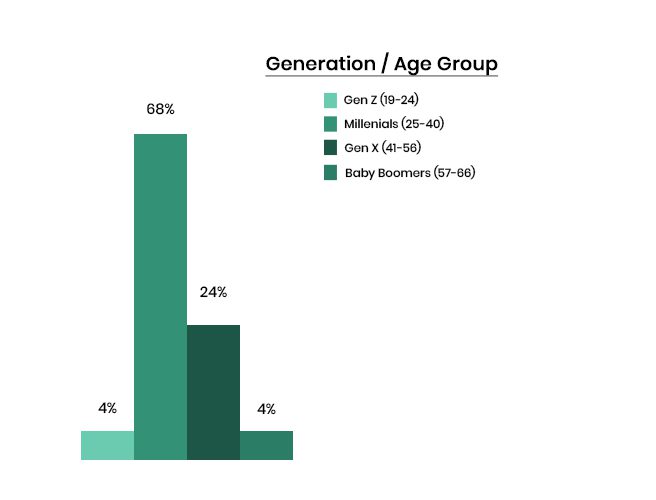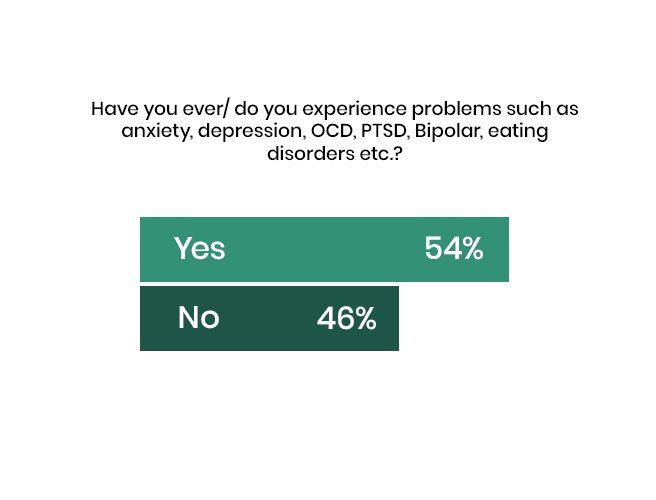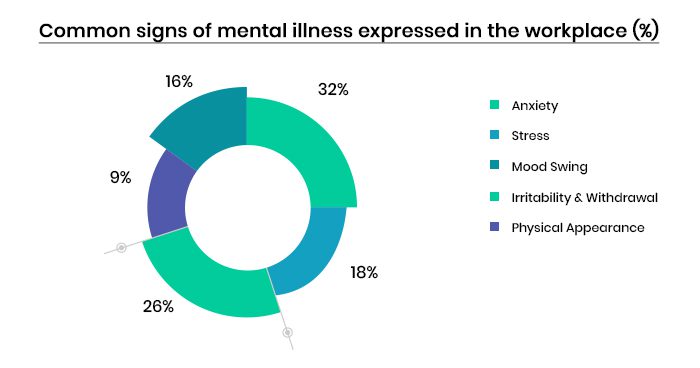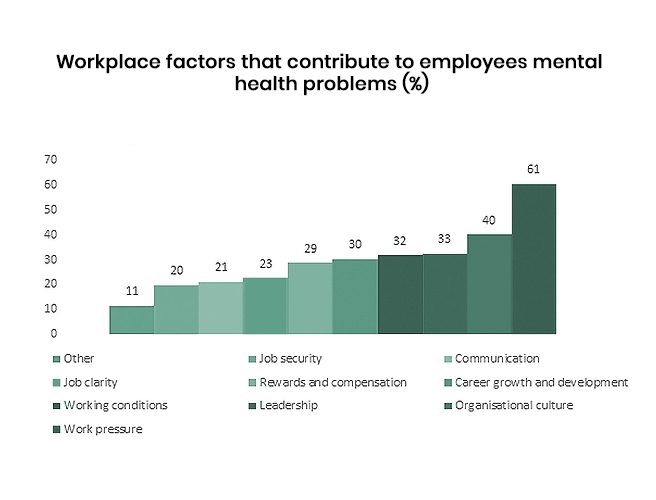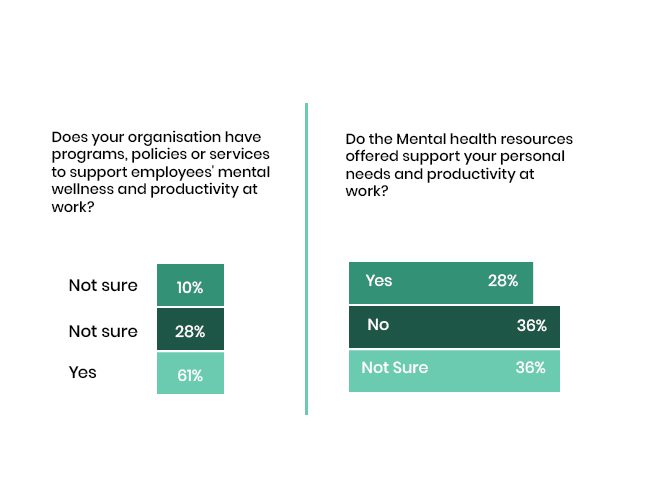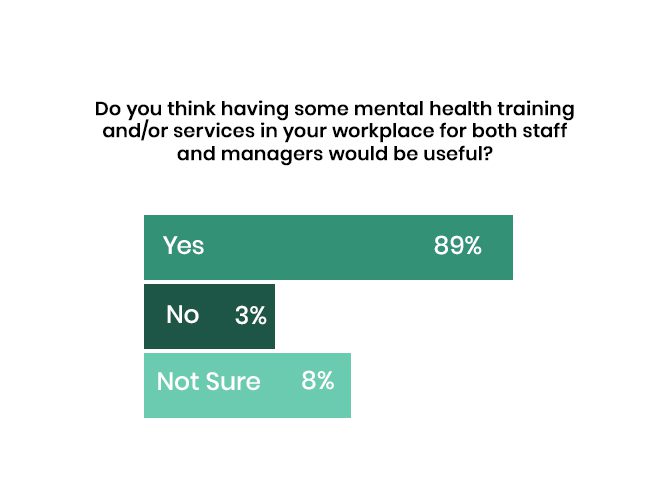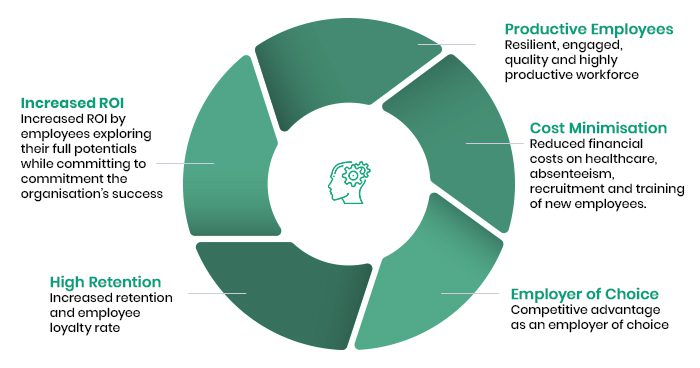Good mental health helps us thrive through life’s activities with purpose and direction. The impact of the covid 19 pandemic has generated a feeling of uncertainty and concerns for the emotional, psychological, and physical state of many individuals. However, mental health problems seem to be one of the most neglected aspects of health in societies like Nigeria. This has posed an underrated challenge for persons with an actual mental illness because of the common misconception that extreme mental illnesses such as depression or drug addiction are associated with traditional and religious beliefs.
This article advocates the need for employers to recognise the existence and reality of mental illnesses in the workplace and commit to credible supportive systems for managing employees’ mental well-being. The article also features insights from an employee survey and interviews conducted by pcl. for organisations across the various sectors in Nigeria to examine the psychological state of employees and identify the common mental health problems they experience in their jobs and the workplace.
Exhibit 1: Age group in the workforce
World Health Organisation (WHO) conceptualises health generally as a state of complete physical, mental, and social well-being and not merely the absence of disease or infirmity. Therefore, mental health is a state of an individual’s well-being whereby one has a sound realisation of their abilities and capabilities to cope with life, work productively and be relevant to oneself and the community.
In the workplace, mental health encompasses all aspects of psychological, emotional, and social well-being and how they influence an individual’s behaviour and productivity at work.
Exhibit 2: Mental Illness in the workplace
Predominant Mental Health cases in the workplace
Findings from the pcl. employee survey revealed that 54% of employees that completed the survey already experience a decline in their mental health. When categorised into age groups and generations, 68% of the employees were millennials, and 24% were Generation X. This is evident because most of the respondents within the industries that participated in the survey are millennials. By familiarising themselves with the symptoms of mental illness in the workplace, leaders will be better able to recognise and support employees struggling to be productive at work. Information gathered from our interviews recognised anxiety, stress, mood swing, physical appearance, and irritability/withdrawal as the common mental illness signs manifested by employees in the workplace. The expressions of these signs are explained below
Exhibit 3: Common signs of mental illness expressed in the workplace
Anxiety: Feeling extremely nervous, worried and tensioned about your ability to deliver accordingly or competent enough to meet certain work expectations. Factors contributing to this may include unclarity or lack of direction on the job, limited work support or resources, job insecurity, and demanding or difficult managers. Some of the signs expressed by such people are fear, lack of confidence in one’s ability, errors on jobs, losing concentration, confusion, forgetfulness, helplessness or crying, restlessness, feeling uncomfortable or avoiding certain people.
Stress: An overwhelming feeling that deters one’s ability to cope with mental or emotional pressure. Stress in the workplace is commonly caused by excessive workload, responsibilities, high expectations and unrealistic deadlines. The common signs of being stressed at work include working overtime, lack of sleep, unhealthy eating pattern, headaches and fatigue.
Mood swing: A rapid shift in one’s emotions which may be triggered by events or experiences, environments, thoughts or people. Employees may show mood swings because of their dissatisfaction with some workplace events or experiences, particularly when it is beyond their ability to control. Common signs of mood swings include a switch from feeling good or/and happy to feeling sad, agitated, unfriendly, unexplained outbursts or a change in personality or behaviour.
Irritability and withdrawal: These are actions individuals take when they feel physically, mentally and emotionally disengaged or exhausted from the organisation or their work activities. The common signs associated with this feeling include a carefree attitude to work, lateness/tardiness, delay in work deliveries, lack of concentration, unwillingness to communicate and avoiding social situations.
Physical appearance: This is relative to the physical look and dressing of the individual, particularly in the workplace or at work events. Signs of mental illness are sometimes reflected in the appearance of an individual, starting from personal grooming down to the type and presentation of the clothes worn. For example, wearing rough clothes, unpolished or cleaned shoes, repeating the same clothes regularly, keeping untidy hair, etc. In general, they start to look unkempt or even carefree about violating the workplace dress code policy.
When asked to identify the mental illness signs employees mostly struggle with at work, Irritability/Withdrawal (31.58%), Anxiety (26.32%), and Stress (15.79%) appeared to be the most common signs expressed by employees. This indicates that the majority of the employees are either feeling withdrawn or struggling with anxiety and stress in their current jobs.
Leading Stressors of Poor Mental Health in the Workplace
Considering that individuals will likely spend a quarter to a third per cent of their lifetime working, it becomes more important than the aspects of their mental and physical health should not be overlooked.
Exhibit 4: Effect of work on mental health
Also, having recognised irritability/withdrawal, anxiety and stress as the leading signs of mental health issues manifested by employees in their current workplace, 48% have indicated that their jobs have contributed to these feelings. The top factors that are currently causing poor mental health in their diverse workplaces include;
Work Pressure: Work pressure rises from high workloads, sometimes with specific expectations peculiar to the work to be delivered by an individual within an unrealistic timeframe. Analysis of the survey shows that 61% of the respondents agree that work pressure is the top stressor of their poor mental health in the workplace. Common adverse effects of work pressure on workers can be anxiety and burnout. Considering the events of the covid19 crisis and its impacts on organisations and businesses, It is no surprise that many employers may have subjected their workers to more work with limited budgets and a lack of resources that would support workers to deliver effectively on their jobs.
Organisational culture: An organisation’s culture is its shared values, belief systems, and people behaviours that make it unique to other organisations. Several factors such as; not living company values, lack of clear and healthy communication, hyper-competition, more focus on business profits than employees’ welfare, office politics, micro-management, low employee engagement, lack of work flexibility, high employee turnover etc. contribute to the existence of negative organisational culture. 40% of the respondents reported being mentally stressed by their organisational culture. The impact of negative work culture is fear-based as this tends to reflect in the workers’ general output, causing a direct effect on the business productivity.
Leadership: Facts from the survey show that 33% of workers agree that leadership is a cause of their mental problems in the workplace. Conclusions on bad or ineffective leadership may emanate from concerns about the non-commitments of leadership to living the values and vision of the organisation, welfare and engagement of employees, trust, transparency and accountability, disrespect, unclear communication from leaders, their inability to influence a positive organisational culture, ineffective contribution to team works etc. A direct mental effect on the workers may include anger, demotivation, fatigue, stress and willingness to leave the job.
Working Conditions: Finding reveals that 32% of the respondents are currently affected emotionally and mentally by the working conditions of their organisations. According to International Labor Organisation (ILO), working conditions span standard work expectations, promotion of policies guiding work-related issues such as; work schedules, rest periods, work safety, remuneration, work hours, work environment, facilities and resources, and job security. The challenges of working during and post the covid-19 pandemic may have contributed to issues relating to flexibility, longer work hours, rest periods and remuneration, amongst others. Some businesses are yet to fully recover from the effect of the pandemic on their finances. Hence, their employees may be subjected to work longer hours, with limited work resources, minimal rest periods or reduced salaries to minimise cost and optimise return on investment for the business sustainability. Poor and unconducive conditions like these may cause employee burnout and hinder optimal productivity at work.
Career Growth and Development: Reasons for which this is recognised as a stressor may include but are not limited to delays in career progression, unclear career pathing, no rewards or recognition for self-development and job performance, lack of training, repetitive and less challenging job activities. 30% of the respondents agree that their career growth and development is a factor to their poor mental health in the workplace. Hence, employees may feel optimistic, unenthusiastic, complacent or motivated to leave the organisation for more challenging and progressive jobs in other organisations.
Exhibit 5: Workplace factors that contribute to employees’ mental health problems (%)
How Mental Health Impacts Employees’ Work Productivity
Mental health plays an immense role in a negative or positive outcomes of employees’ performance in the workplace. In the personal interviews with some employees working in different sectors such as Financial Services, Retail, Consulting, Technology and Legal – several impacts of mental health on work productivity and how employees have managed to deal with them were identified. The effects of mental illnesses are more evident in high-performing employees, which translates into their productivity at work. Below are the frequent effects and impacts of mental illness on employees’ work productivity.
- Distractions and difficulties in concentrating on the job. This may result from not creating the right balance between work and personal life; hence, the detrimental effect of managing challenges arising from these impacts the quality of results at work.
- High turnover rate. This can be the worst effect of mental illness on employees’ productivity in the workplace. Apart from demoralising and impairing the productivity of the current workforce, a high turnover rate creates an additional business cost for recruitment and training.
- Exhaustion and declined energy. Low morale and exhaustion are common attributes associated with employees replacing or relieving absent employees. These employees will be required to execute more tasks than is normally associated with their jobs. Individuals in this situation with minimal support are prone to accidents, missing deadlines and total loss of interest and energy in performing well on the job.
- Constant errors or mistakes on the job. This is sometimes an inevitable cost of working when physically sick or mentally drained. There is a higher tendency to lose control over retaining focus on the job when the body is weak and the brain is overworked with minimal rest.
- Absenteeism from work. This is the habitual physical or/and mind absence of employees from work. While employers are prepared for absences like vacations and sick leaves, frequent absences – “mind absence” in particular – because of mental illness, disengagement from work or other related distractions can equate to loss of focus and decreased productivity of employees’ work.
Absenteeism and employee high turnover are possibly the worst effects of poor mental health in the workplace. An increased rate of “mind absenteeism” and turnover rate impacts the attitudes and productivity of the workforce. When a majority of the workforce are unable to give their best because they are; overworked, taking sick leave, demotivated or disengaged from the affairs of the business or organisation etc., the quality of individuals and the overall business results and revenue decline.
A happy and healthy workforce will produce vibrant and enthusiastic employees focused on delivering beyond business goals and expectations. Employers can retain their best employees if they can support them with the right people and mental and physical resources to enable them to perform better at work. Employees tend to reciprocate their commitments and loyalty to employers that prioritise their well-being, growth, and development.
In understanding how employees have managed to deal with their mental health and work productivity, two leading behavioural patterns amongst others were recognised to be adopted by some individuals to suppress the impact of their mental health symptoms on their work productivity. They include;
- Working overtime is also known as “presenteeism” because some workers believe they work best under pressure. This impacts positively on their performance, while others explain that they feel obliged to work because; their managers engage presenteeism, they have a lean work team with excessive workloads and demands. Another reason is the peer pressure and the need to build a perception of being a “hardworking” employee.
- Dependence on substances (legal or illegal) such as drinking alcohol, smoking tobacco, cannabis, or marijuana (popularly known as joint or loud) and caffeine (coffee) to remain active and focused on their job. As a result of being obliged or committed to retaining high performance at work, some employees have been accustomed to substance abuse to keep them active for longer hours than usual while ensuring their job delivery expectations.
Over the long run, these patterns impact employees’ physical and mental health and the quality of their work.
How Employers Can Improve Their Approach to Mental Health at Work
Having recognised the impact of workplace activities on employees’ mental health, it is important to know how much organisations have considered integrating programmes, policies or services to support employees’ mental wellness and productivity. 61% and 10% of respondents confirmed the absence and uncertainty of active mental health support in their organisations. On the contrary, 28% of employees acknowledged this service’s existence in their organisations, but 36% of respondents agree and are uncertain that the mental health resources offered by their organisations support their personal needs and productivity at work.
Exhibit 6: Mental health resources in the workplace
From the information gathered in this study, we have factored in the challenges of mental health in the workplace and identified possible practices organisations and leaders can adopt to manage and ensure a mentally stable workforce;
Pulse survey: A first step to managing mental health problems in the workplace is recognising and acknowledging their existence. Organisation leaders should not assume they know their employees’ existing mental health needs without scientific data and facts. Hence, it is important to encourage frequent employee check-ins and pulse surveys. This will help organisational leaders gain employees’ views on subjects relative to their jobs, experiences, challenges, relationships, and general work environment. Conducting pulse surveys will assist in recognising the current mental health challenges in the workplace and the possible solutions to mitigate the impacts on the employees and the organisation.
Mental health first aid: When asked about mental health training in the workplace, 89% of employees agreed that it would be useful for all staff and leaders in the organisation. Now is the time for organisations to prioritise and be proactive in the training and awareness of mental health in the workplace. Mental health first aid is a training programme that should educate leaders, managers, and all individuals in the workplace on mental health and how to prevent and navigate its effects on individuals’ personal and work lives. The programme will expose individuals to real-life experiences, learning materials and resources to aid their understanding and assessment of their mental health. Being open to sharing your experiences as leaders will encourage employees to feel comfortable, understand, embrace and assist others struggling with their mental health in the workplace. This helps to reduce the stigma and discrimination in the workplace.
Exhibit 7: Mental health services in the workplace
Work culture: The majority of the responses from our interviews and survey responses reveal the difficulty of employees sharing their mental health struggles in the workplace. 33% of employees would rather trust others outside their organisations to support them with any mental health issues relating to their jobs. This shows a distinct lack of trust and confidence in the organisation’s culture to recognise and support employees struggling with their mental health. Even more shockingly, 22% of respondents are confident to disclose their mental health challenges to their immediate managers. It means more employees are likely to be open to their managers if the organisation is more open to a supportive culture that prioritises employees’ mental health.
Exhibit 8: Mental health support in the workplace
Work programmes and policies: To improve the workforce’s mental health, organisations may have to be generous and flexible enough to review and update the existing workplace policies and introduce programmes that will support employees’ well-being and productivity. For example, policies around flexible hours or hybrid work culture, paid leave, sick leave, teamwork, constructive performance feedback and reviews, communication channels, and counsellors or mentors; can be reviewed and reframed to support a positive and mentally healthy, stable workforce. Introducing and ensuring all employees have direct access to confidential programmes like the Employee Assistance Programme (EAP) or the inclusion of mental health care in their health plan will help to mitigate the impacts of mental illness on their well-being.
Physical workspace design: Before the pandemic and during the post-pandemic, an average employee will spend a minimum of 40hours weekly in the workplace. These hours spent in the workplace tend to impact our moods, routine, and well-being. Since the workspace and the hours committed by workers to be physically present at work tend to impact their mood and productivity in their jobs, it is important to design a physical environment and ambience that bests support their mental and physical stability at work. This includes comfortable work desks and chairs, a variety of workspaces, warm colours, conducive lighting, conference rooms, lounge areas, quiet rooms, etc. Creating a workspace inspired by home design is a strategic way of positively keeping employees engaged. The comfort employees feel working in such environments will motivate their undivided presence and productivity at work.
On-the-job support: This report has identified anxiety and stress as some of the leading signs of mental illness affecting workplace employees, including managers. Team members need to be accustomed to having positive conversations, which can lead to mutual agreements on how to support each other on the job. Subordinates should be willing to offer their managers the support they need to perform optimally in their positions. On the other hand, managers should be available and willing to support subordinates struggling with any challenging work activities by providing helpful resources, coaching on the jobs, helping in skill empowerment, or giving fair and realistic deadlines.
Promote healthy behaviours: Promoting healthy behaviours is easier when leaders intentionally model positive habits and attitudes in the workplace. People are easily impacted by the behaviours or attitudes commonly projected by their leaders, particularly their immediate managers or senior colleagues whom they work with closely. Examples include being empathetic, working collaboratively with subordinates, making time for employees, presenting a positive attitude towards work, learning about the employees, encouraging associates to take leave and breaks, or offering support and motivation. Organisations should support managers, work buddies, mentors or counsellors to work with employees to take intentional steps into ensuring positive well-being. This can be done by working with them to identify their mental illness triggers and creating feasible action plans to promote healthy behaviours.
Relevance of a Healthy Mental Workplace
Some key potential benefits of organisations and leaders encouraging a healthy mental workplace include the following;
Exhibit 9: Effects of a healthy workplace
Conclusion
Undoubtedly, mental health illness in the workplace has become a trend in recent times, and organisations would be remiss to underestimate its impact on their workforce and overall business productivity. Mental health wellness is no longer a “nice-to-have” but a necessity for organisations. The impact of an unhealthy mental workplace will cost an organisation its people and financial resources.
However, organisations looking to address mental health issues in their workplaces must first assess the culture and leadership team. Having the right culture and a supportive leadership team are key factors to drive an effective and more positive work environment. Therefore, organisations need to coach their leaders on reinforcing an empathetic and more inclusive culture to encourage employees’ mental wellness, sense of relevance and optimal productivity at work.
At pcl., our People Transformation services support organisations in making strategic and significant shifts that impact people and business performance. Our Culture Management and Leadership Development programme will help position the organisation and its leaders in the best fit to effectively address the constantly evolving needs of business, workforce and productivity. For further enquiry, contact people@phillipsconsulting.net
Written by:
 |
 |
| Olawanle Moronkeji
Partner, People Transformation |
Adolrah Boyejo
Analyst |

